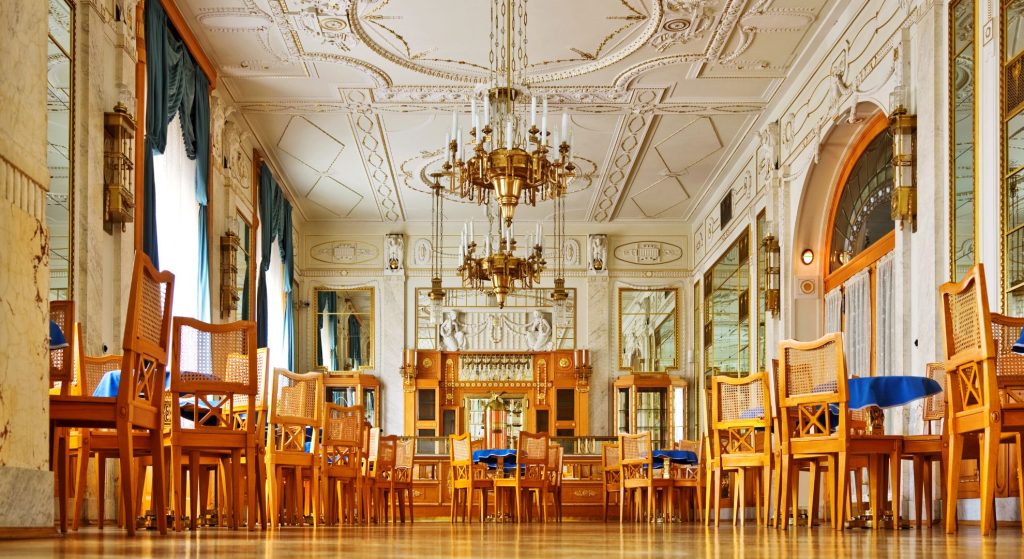Blending Tradition with Modern Minimalism
Our homes are more than just living spaces in today’s busy world. They are sanctuaries of peace and style. As an art historian and modern interior designer interested in minimalism, I am thrilled to guide you through the charming world of Rustic Nouveau.
This blog post talks about the Rustic modern interior design, showcasing how the raw charm of Rustic elements perfectly combines with the clean lines of minimalism and the innovative spirit of modernism.
Embracing the Rustic Nouveau Style

Rustic Nouveau is more than just a design trend; it’s a lifestyle choice that celebrates simplicity, nature, and innovative design.
This harmonious blend combines the best of Rustic warmth and modern sleekness, creating inviting, timeless interiors and bridging the gap between old-world charm and contemporary living.
The Philosophy Behind Rustic Nouveau
This style is a thoughtful fusion of three distinct aesthetics:
- Minimalism: Focuses on simplicity, functionality, and a monochromatic color scheme.
- Modernism: Celebrates innovation with new materials and technology, often featuring clean, geometric forms.
- Rustic Art Nouveau: Adds warmth with its focus on natural materials, earthy colors, and rough textures.
Integrating these elements creates minimalist interiors that are not stark, modern, warm, and Rustic without feeling outdated.
Key Elements of Rustic Nouveau Design
The Rustic Nouveau design merges the serene simplicity of minimalism with the textural depth of Rustic styles and the fresh appeal of modernism. Here’s how you can harness the power of materials, color schemes, and thoughtful design to create inviting and contemporary spaces:
1. Materials and Craftsmanship
Rustic interior design style relies on natural materials’ authentic textures and enduring qualities. Wood, stone, and metal form the foundation of this style, with reclaimed wood offering a distinctly Rustic feel and polished metals and glass introducing a modern edge.
These materials are functional and central to the aesthetic, each piece telling its story and adding character to the space.
2. Color Palette
The color palette of Rustic Nouveau is grounded in neutral tones of white, gray, and black, establishing a minimalist backdrop that allows other elements to shine.
Accents drawn from Rustic shades like earthy browns, soothing beiges, and muted greens infuse warmth into the space, creating an inviting and harmonious atmosphere.
3. Furniture and Layout
Furniture in Rustic Nouveau design is characterized by clean lines and simple shapes, supporting the style’s minimalist and modern aspects.
Pieces made from natural wood with a raw finish bring the Rustic aesthetic into play. At the same time, an open and clutter-free layout ensures the space remains breathable and fluid, encouraging movement and interaction.
4. Textures and Fabrics
In Rustic Nouveau interiors, the interplay of textures is key. Combining rough, natural fabrics like wool, burlap, and linen with smooth, contemporary materials like leather and metal creates a dynamic yet balanced look.
This mix adds visual interest and tactile variety and maintains the minimalist vibe by focusing on quality over quantity.
5. Innovative Lighting
Lighting in the Rustic interior design style should be both functional and prominent, with fixtures like industrial-style lamps that complement the raw, structural beauty of the space.
Maximizing natural light is also crucial, as it enhances the overall minimalism and brings out the rich textures and colors of the Rustic elements, making the space feel open and airy.
The Role of Art in Rustic Nouveau

Art is fundamental in enhancing the Rustic Nouveau aesthetic, bridging the gap between Rustic warmth and modern elegance.
To complement the Rustic Nouveau style, opt for artwork that features natural motifs and earthy colors, such as landscape paintings, botanical prints, or abstract pieces with organic forms.
Sculptural elements in raw materials like wood, clay, or metal also integrate seamlessly, adding dimension and a touch of artisanal craft to the space.
These art choices highlight the design’s natural elements and serve as focal points that emphasize simplicity and authenticity.
The Psychological Benefits of Rustic Nouveau Design
Rustic Nouveau design offers significant psychological benefits, primarily by emphasizing natural elements and organized spaces.
Using materials like wood and stone and a palette of neutral and earth tones helps create a calming environment that reduces stress and promotes relaxation.
The open layouts and incorporation of natural light enhance this effect, making spaces feel more breathable and open. The Rustic aspects of the design connect inhabitants with nature, which is known to improve mood and mental well-being.
Together, these features make Rustic Nouveau interiors aesthetically pleasing and sanctuaries for mental and emotional health.
Conclusion
The blend of Rustic style with minimalism and modernism in Rustic Nouveau design isn’t just about aesthetics; it reflects a lifestyle that values authenticity, simplicity, and ecological consciousness.
By selecting spaces that celebrate this unique blend, we create environments that are not only visually appealing but also deeply connected to both our heritage and modern innovations. Rustic Nouveau is about imitating a path to a home that is both a peaceful retreat and a statement of timeless design.
